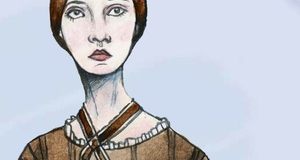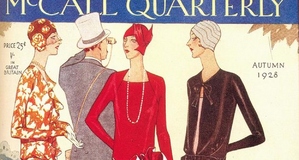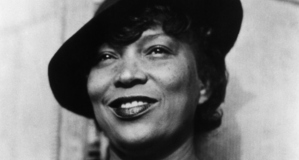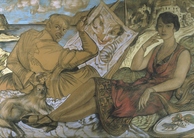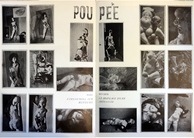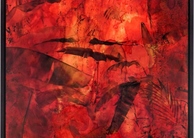The Eternal Search for Truth: A Comparative Analysis of Marie Denise Viller's A Young Woman Drawing and George De La Tour's The Penitent Magdalen
By
2012, Vol. 4 No. 07 | pg. 1/2 | »
KEYWORDS:
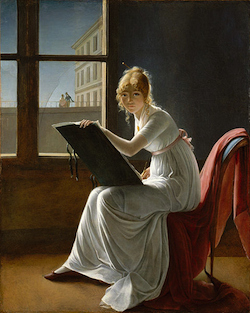 A Young Woman Drawing, 1801, Marie-Denise Villers A Young Woman Drawing, 1801, Marie-Denise VillersThe search for truth is a struggle that has plagued humanity since the dawn of time. At the core of all human beings is an authentic self that thinks and feels on a level which is completely unique to each individual. Yet too often, people sacrifice this authenticity to conform to societal opinion merely because it is easier, and less daunting, than attempting to understand one’s uninfluenced, innermost morals, beliefs, and truths. The comparison of the paintings A Young Woman Drawing by Marie Denise Villers and The Penitent Magdalen by Georges de La Tour suggests the importance of embarking on the treacherous journey of self-discovery in order to obtain personal satisfaction. While both paintings depict similar subjects—young women in solitude contemplating life—Villers’ painting illustrates a dejected and emotionally numb woman who has succumbed to societal values and has failed to understand her own personal morals, and therefore is unhappy with her life. La Tour’s painting, in contrast, depicts a young woman (Mary Magdalen) who has chosen to both discover and act upon her personal passions and morals regardless of societal opinion, and as a result is able to feel, live, and attain fulfillment in a way that the woman in Villers’ painting never could. Through key differences – such as the rhythm of horizontal and vertical lines in Villers’ painting versus the lack of rhythm in La Tour’s painting, the use of composition in Villers’ work to emphasize hopelessness and numbness versus the use of composition in La Tour’s piece to emphasize feeling and passion, the pastel color scheme (in conjunction with the soft lighting) of Villers’ work versus the deep, rich color scheme (in conjunction with the dramatic, intense lighting) of La Tour’s work – the artists suggest the importance of taking the time to discover one’s personal truths and to live a lifestyle that is consistent with those truths in order to attain maximum fulfillment in life. 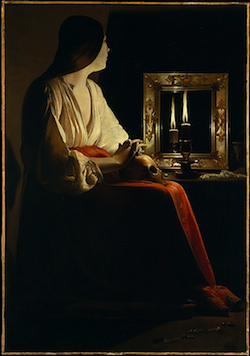 The Penitent Magdalen, George De La Tour The Penitent Magdalen, George De La TourIn A Young Woman Drawing, Villers suggests the oppressiveness of society and the woman’s desire to break free of societal confines through a series of rhythms of horizontal and vertical lines. The thick, crisp juncture at which the wall and the floor join, the horizontal strip of brown paint which adorns the lower third of the wall, the flat bottom of the window pane, and the thin central diving strip of the window pane creates a rhythm of horizontal lines which pervades the painting. This rhythm is further reinforced by the scene of the outside world beyond the window pane, in which the endless abyss of blue sky is severed harshly by the gray, concrete horizontal edge of the balcony wall. The repetition of horizontal lines is complimented by a rhythm of vertical lines throughout the painting, as illustrated by the thick, central dividing strip of the window pane and the vertical edge of the window pane (located in the center of the composition just behind the woman’s hair). The vertical leg of the chair provides a sense of balance to the composition ensuring that the rhythm of vertical lines is maintained not merely on the left half of the composition (where the window is located) but on the right half as well. The rhythm of horizontal and vertical lines work together to impose rigidity and order to the scene. They serve as clean, neat, boundaries, helping to make the space in which the woman dwells rational by dividing the wall and the floor into understandable parts, providing central axes to the composition, providing a clear distinction between the interior of the room and the outside world, and allowing the scene beyond the window to be easily comprehended by once again dividing it into understandable parts. The horizontal and vertical lines tightly control the scene, and from this the viewer can derive that the society in which the woman dwells is highly rational, logical, controlled, and stable. Indeed, this painting was created during the time of the Enlightenment, in which order and reason superseded emotion, and in which values such as self-sacrifice for the greater good superseded the need for self-exploration. The spacious, regimented background, both in and outside, which overwhelms the woman allows the viewer to understand that the woman places herself secondary to the morals and values of society. Society expects the woman to devote herself to her domesticated duties. Villers isn’t necessarily denouncing this value set, but she is suggesting that because the woman never took the time to discover her personal truths and morals—because she allowed herself to remain trapped within the oppressive, strictly controlled interior of her household rather than putting herself out there and experiencing life—she can never know whether or not society’s values coincide with her own values, and she can thus never understand whether or not she is truly happy.Like Villers’ A Young Woman Drawing, La Tour’s Penitent Magdalen features a young woman (Mary Magdalen) contemplating her path in life; however, this woman has not allowed society to prevent her from embarking on the journey of self-discovery to understand what she wants from life. A biblical figure, Mary Magdalen became a celebrated disciple of Jesus after witnessing his resurrection. Prior to her conversion, however, Magdalen was considered to be a sinner, indulging in temptation and pleasures of the flesh. La Tour’s painting depicts the moment just before her conversion, in which—although feeling guilty about her previously indulgent lifestyle—Mary questions whether or not she has made the right decision in choosing to renounce her ways for Jesus. Unlike A Young Woman Drawing, Penitent Magdalen contains no repetition of lines or shapes within the background; in fact, the background merely consists of negative space. La Tour purposely does not incorporate a complex background (with a complex rhythm of shapes and lines) into the painting not only because he wants more important elements, such as light and color, to speak, but also because he does not want to detract from the importance of Mary as the primary subject of the painting. The complex, rational background in A Young Woman Drawing overwhelms the woman because Villers wants the viewer to understand that the woman is a victim of a rigid society. By providing a simple background and by making the space somewhat mysterious, La Tour wants the viewer to understand that Mary is not bound by the morals of society whatsoever. Regardless of whether or not society approved of her actions, Mary behaved in a way which she believed would provide her with personal fulfillment, whether it be indulging in temptation or following Christ. Emphasizing Mary as the sole subject of the painting with a simple background allows La Tour to communicate the idea that Mary’s thoughts and questions about her life path are completely uninfluenced by societal opinion. Ultimately, La Tour suggests, Mary will be able to discover personal fulfillment in life because she is not afraid to defy society and to explore her passions. The woman’s sense of hopelessness in A Young Woman Drawing is further reinforced by the way in which the artist employs composition. By emphasizing the woman through negative space and placing the woman in the foreground of the composition, the artist directs the viewer’s eye first to the right side of the composition, to the woman and the room which she inhabits, and then to the left side, where the action in the background (through the window) is occurring. At first glance of the painting, the viewer’s eye is immediately drawn to the woman in front of the blank wall. The blank wall functions as a negative space which emphasizes the woman as the focus of the painting; it causes the viewer to immediately note the woman’s hunched form. This hunched position is one of defeat and somberness, and it suggests that the woman has, unhappily, surrendered herself to the life that society has predetermined for her. After noting the woman’s general form, the viewer is then struck by the woman’s rather empty facial expression, but most notable upon the face are the woman’s piercing eyes. The eyes of the woman simultaneously express the hollowness that the woman feels and her yearning for something more. The artist places the woman’s eyes parallel to the lovers on the balcony through the window in order to draw a connection between the outside world (society and societal values) and the woman’s emptiness. Through the juxtaposition of the woman’s empty eyes and the lovers, the artist suggests that women should not necessarily expect to find fulfillment in life by falling in love or submitting themselves to a man; women must go out and experience life for themselves in order to discover whatever it is in life that will spark passion, inflame the spirit, and stir the soul. The women’s hollow eyes suggest that she has not allowed herself to get out there and to discover her passions; she has mindlessly followed the path that society has dictated for her, and, as a result, she has lost the ability to feel and to hope. After noting the connection between the woman’s eyes and the lovers, the artist directs the eye to the woman’s drawing board (to complete the viewer’s understanding of the composition), which, placed on a diagonal, abruptly interrupts the scene of the outside world through the window, and contrasts sharply with the rigid horizontal and vertical lines which compose that outside world. Through this defiance of order and rhythm imposed throughout the rest of the scene, the artist once again symbolizes the woman’s internal longing to break free of the societal confines which so strongly bind her to a life of emptiness and dissatisfaction.Continued on Next Page » Suggested Reading from Inquiries Journal
Inquiries Journal provides undergraduate and graduate students around the world a platform for the wide dissemination of academic work over a range of core disciplines. Representing the work of students from hundreds of institutions around the globe, Inquiries Journal's large database of academic articles is completely free. Learn more | Blog | Submit Latest in Visual Arts |







